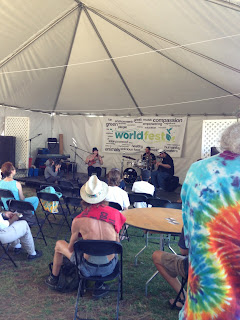

Plastic seems to consume our lives. Especially in the kitchen from storage to dishes to containers. However, plastics are not only bad for the environment but also bad for us. The toxins inside of plastic materials can seep into our food and liquids when heat is applied. Some toxins are even cancer causing agents such as BPA. Plastic waste account for a considerable number of pollution in our environment and are also the culprits in the Dead Zones in our oceans. It is time to phase out plastics once and for all.
Glass can be recycled into more glass and never use its value meaning, glass can be recycled into more glass forever and ever until the end of time. However, plastic containers cannot be recycled into more plastic bottles/containers. The plastic can only be downcycled into something different such as plastic lumber or carpet padding. Every time plastic is recycled, it loses its value. So, whenever you see plastic bottles, jars, or other containers, it’s new plastic. All new resources went into making it.
Here's the Facts
- One million sea birds and 100,000 marine mammals are killed annually from plastic in our oceans.
- Marine Life is consuming small pieces of plastic and all the toxics on it, which then is consumed by us.
- Two patches of plastic are being accumulated year after year in the ocean. They’re not going anywhere, at least in the next 1,000 years.
- Over the last ten years we have produced more plastic than during the whole of the last century.
- 50 percent of the plastic we use, we use just once and throw away.
- Enough plastic is thrown away each year to circle the earth four times.
- We currently recycle only five percent of the plastics we produce.
- The average American throws away approximately 185 pounds of plastic per year.
- Americans throw away 35 billion plastic water bottles every year (source: Brita)
- Annually approximately 500 billion plastic bags are used worldwide. More than one million bags are used every minute.
- It takes 500-1,000 years for plastic to degrade.
- Some of these compounds found in plastic have been found to alter hormones or have other potential human health effects.
- Plastic chemicals can be absorbed by the body—93 percent of Americans age six or older test positive for BPA (a plastic chemical).
- Virtually every piece of plastic that was ever made still exists in some shape or form (with the exception of the small amount that has been incinerated).
- 44 percent of all seabird species, 22 percent of cetaceans, all sea turtle species and a growing list of fish species have been documented with plastic in or around their bodies.
Here's how to help;
- First and foremost, NO MORE PLASTICWATER BOTTLES!! Not only are they extremely wasteful AND expensive AND contribute to the privatization of water AND are mostly tap water anyway, they are one of the main culprits of litter pollution. Chemicals from the water bottle seep into your water and into your system. Just grab a water filter and a portable water bottle.
- Replace plastics with glass or metal; Instead of using your everyday plastic tupperware, opt for the glass tupperware and/or mason jars. Glass is better than plastic because;
- BPA is not present in glass.
- There is a better taste in glass bottles opposed to plastic.
- Glass is completely reusable therefore there is less waste.
- Glass does not leak any chemicals into our food/liquids.
- Paper or plastic? NEITHER. Opt for the reusable grocery bags. They don't even have to be the store bought reusable bags. Any cloth bagging will work. Some states are even charging 10 cents per bag while others are banning plastic bags in grocery stores completely. So save money AND the environment. Also, the cloth bags hold more food and you don't have to worry about the bag bursting open.
- NEVER EVER EVER BUY NON REUSABLE DISHES. And I mean EVER. Not even for a pic-nic or your house parties. Not those red plastic cups people love so much and especially not those Styrofoam cups that do not biodegrade at all! Meaning, they will be present in the earth for hundred of years! The thing is, they are a waste of money and a waste of waste. They all end up in the trash within one use which ends up in our ever expanding landfill. Instead, opt for reusable dishes. Chances are, if you needed them once, you'll probably need them again. Grab the cheap dishes for pic-nics and parties if you're afraid of getting them messed up.
- Opt for the glass packaging. Glass packaging yields a better taste for food, is not only recyclable but also reusable. I always reuse my food packages for food storage like left overs. I love the glass mason jars :) Glass packaging for organic foods got high marks for: maintaining true flavor/taste, purity, healthiest, maintaining quality, preserving shelf life.
photo credits; www.doitwiser.com , http://plastic-pollution.org

























